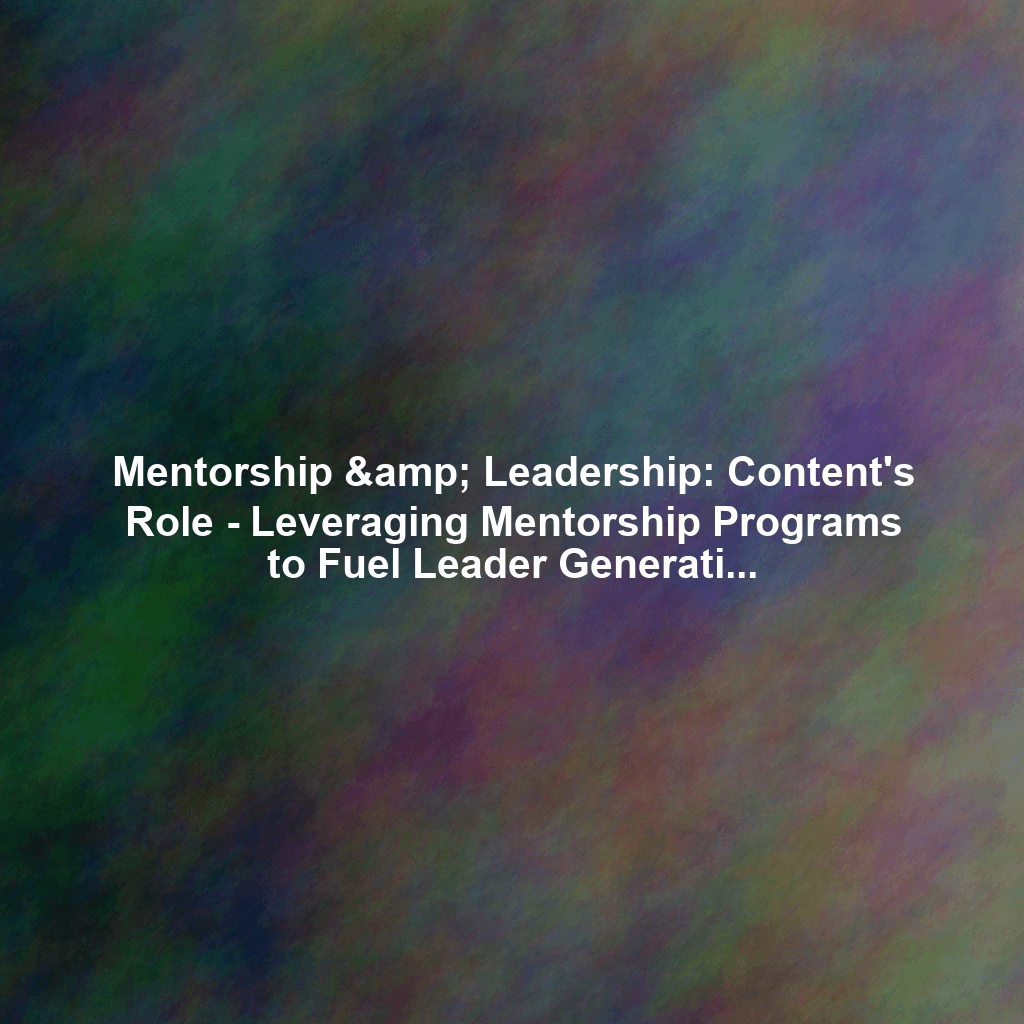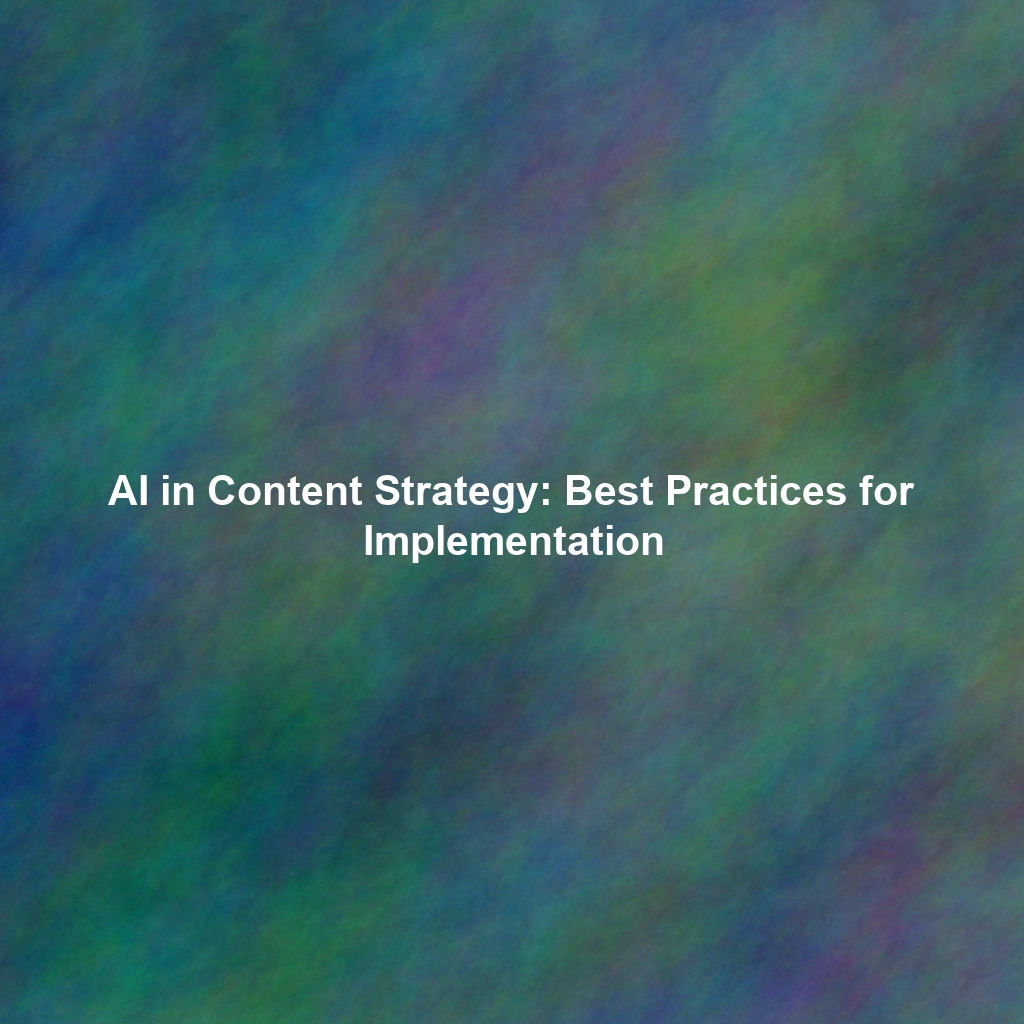Why Mentorship Programs Are Essential for Leader Generation
Mentorship provides an intentional framework for leadership development. For mentees, it offers more than just guidance—it provides a lifeline of lived experience. For mentors, it’s a way to hone their coaching, communication, and empathy—crucial skills for modern leadership.
These programs create a ripple effect—mentored employees are often inspired to become mentors themselves. Over time, this creates a self-sustaining ecosystem of leadership, especially if that journey is visible, celebrated, and supported with high-quality content.
The Content Marketing Advantage: Enhancing Mentorship Engagement
Content is the bridge between mentorship and momentum. Whether it’s helping mentors prepare for meaningful conversations or showcasing success stories to recruit new participants, content marketing injects life into the program. Done right, it educates, inspires, and attracts.
Content Strategies for Mentors: Empowering the Guides
Mentors are at the heart of the program. Equipping them with content-rich resources doesn’t just make their job easier—it elevates the entire experience.
- Mentorship Playbooks: In-depth guides outlining the phases of mentorship, from kickoff to wrap-up, including do’s and don’ts for ethical and impactful guidance.
- Goal-Tracking Templates: PDF or editable templates that help mentors and mentees co-create measurable objectives for the relationship.
- Conversation Catalysts: A curated set of prompts, scenarios, or dilemma cards to facilitate honest and productive discussions—especially useful during lulls.
- Leadership Insights Library: An internal content hub linking to studies from Harvard Business Review, Forbes Leadership, and think tanks like The Center for Creative Leadership.
- Microlearning Videos: 5-10 minute videos on topics like “How to Listen Like a Coach” or “Giving Constructive Feedback Across Cultures.”
Content Strategies for Mentees: Nurturing Future Leaders
Mentees are often unsure of how to maximize their mentorship experience. Targeted content can help them show up prepared and leave every session with actionable insights.
- Real-Life Success Narratives: Written or video stories of past mentees who moved into leadership roles, especially powerful when paired with anonymized before-and-after data.
- Soft Skill Mastery Courses: Short modules on communication, conflict resolution, executive presence, and emotional regulation—key leadership competencies.
- Leadership Role Model Spotlights: Profiles of senior leaders in the company or industry, with quotes, career trajectories, and “lessons learned” sections.
- Career Planning Workbooks: Downloadable resources that help mentees reflect on career aspirations, identify development gaps, and plan next steps.
- Self-Assessment Tools: Interactive personality quizzes, leadership style assessments, and feedback collection templates that feed into mentor conversations.
Showcasing Mentorship Successes: Building Credibility and Attracting Participants
No matter how impactful your mentorship program is internally, it won’t attract broader participation or recognition unless you tell the story externally. And storytelling, at its core, is content marketing.
Case Studies: Demonstrating Tangible Results
Numbers tell. Stories sell. Create rich, metrics-backed case studies featuring a mentor-mentee pair. Highlight not just what happened, but why it worked.
- Format: Problem → Approach → Outcome → Lessons Learned
- Include: Career growth metrics, retention stats, and culture/engagement survey results where possible
- CTA: End each case study with a call-to-action inviting new participants to join
Testimonials: Capturing Personal Experiences
Gather short-form testimonials that feel authentic, not scripted. Use these on landing pages, social posts, and internal newsletters. Example formats:
- “Before/After” style: “Before mentorship, I struggled with speaking up. Today, I lead weekly client calls.”
- Video clips: 30–60 second mobile-shot testimonials from participants sharing one key takeaway.
Blog Posts and Articles: Sharing Insights and Lessons Learned
Create bylined pieces from mentors and mentees for your company blog. Some topic ideas include:
- “What I Wish I Knew Before Becoming a Mentor”
- “How My Mentee Helped Me Become a Better Leader”
- “5 Lessons from My First Year in a Mentorship Program”
These posts can be repurposed as LinkedIn content or internal newsletters—maximizing their ROI.
Social Media Engagement: Amplifying the Message
Use channels like LinkedIn, Twitter/X, and Instagram to showcase real moments from the program. Share quotes, behind-the-scenes images, and participant highlights using a dedicated hashtag (e.g., #LeadersGrowHere).
Engagement ideas include:
- Monthly “Mentor Shout-Outs”
- “Meet Your Mentee” posts featuring pair profiles
- Reposting user-generated content with branded graphics
Measuring the Impact of Content Marketing on Mentorship Programs
As with any marketing initiative, measurement is critical. Track content performance using:
- Engagement: Click-through rates, session duration, social shares
- Recruitment: Applications before and after content campaigns
- Progress: Number of mentorship relationships sustained over 6+ months
- Impact: Promotion rates, employee retention, and performance scores of mentees vs. control group
Conclusion: Investing in Leadership Development Through Mentorship and Content
Great leaders aren’t born—they’re mentored, nurtured, and shaped. And great mentorship programs don’t thrive in silence—they need content to fuel awareness, participation, and transformation. By combining the human power of mentorship with the strategic power of content marketing, organizations can create a leadership pipeline that’s scalable, inclusive, and future-ready.
“Mentoring is a brain to pick, an ear to listen, and a push in the right direction.” – John C. Crosby
Now’s the time to stop treating mentorship as an afterthought. Start treating it as the cornerstone of leadership—and content as its megaphone.
 Skip to content
Skip to content

